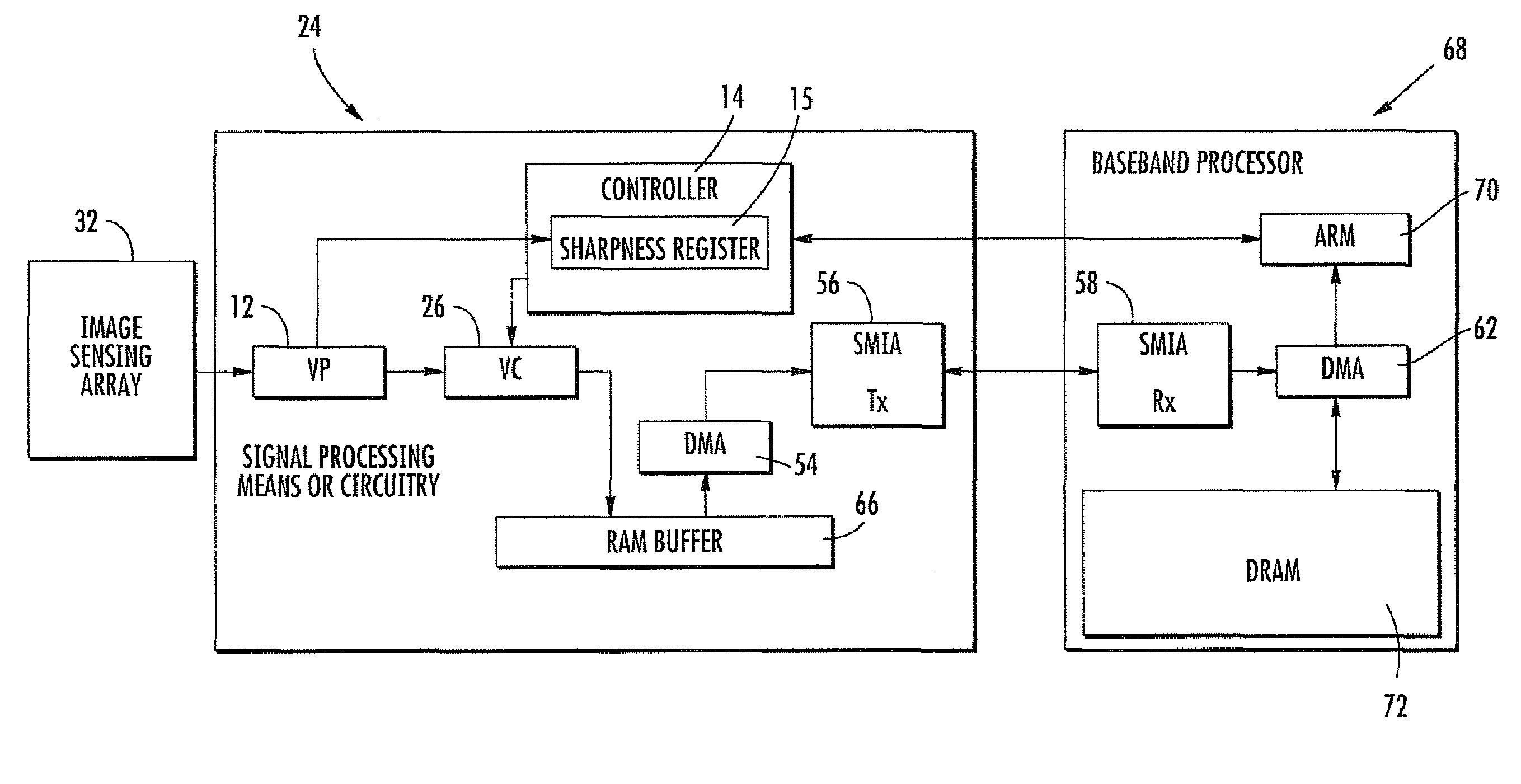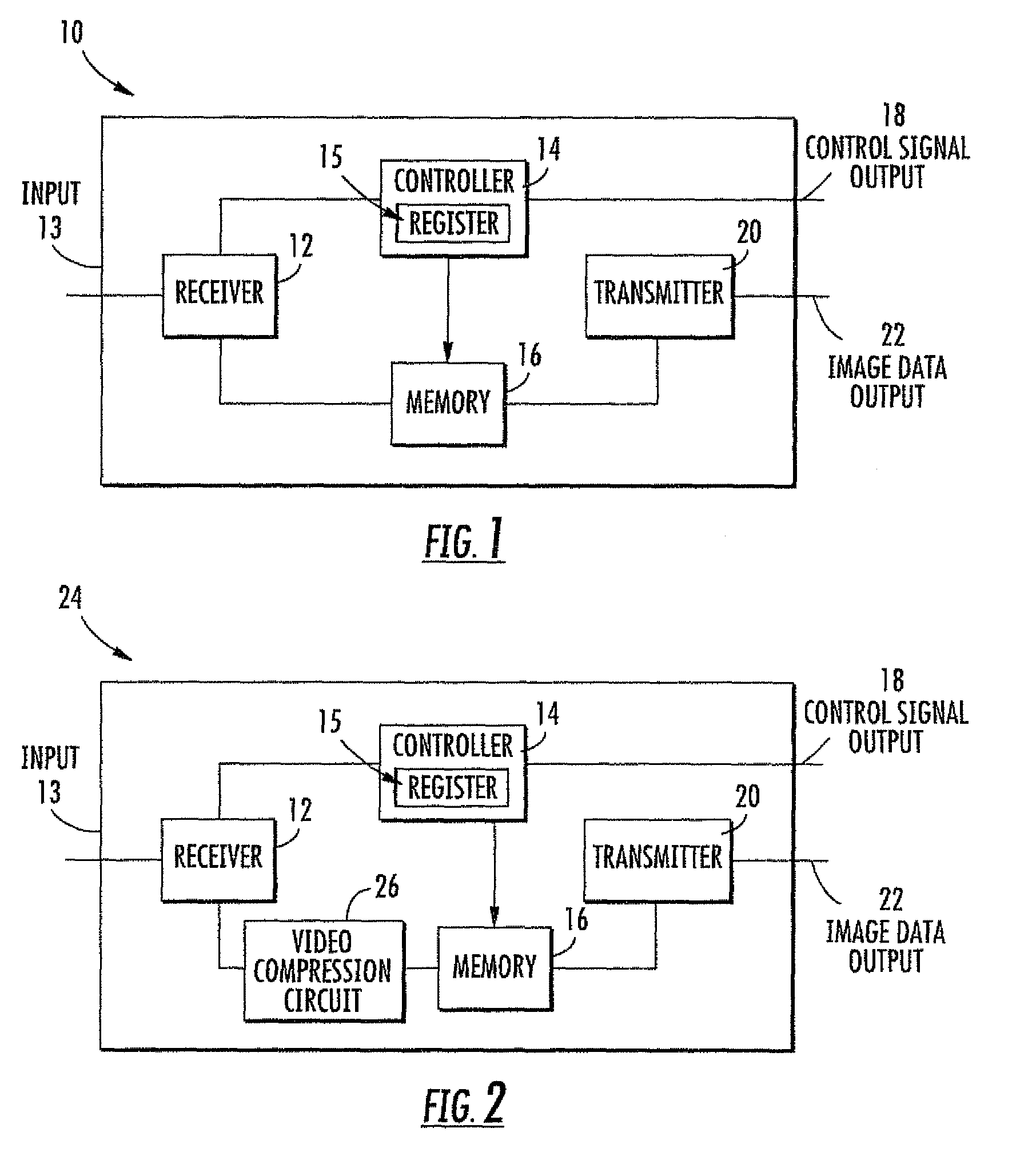Image sensors for establishing an image sharpness value
a technology of image sharpness and image sensor, which is applied in the field of image sensors, can solve the problems of consuming significant power, further exaggerating the problem, and adding considerable complexity
- Summary
- Abstract
- Description
- Claims
- Application Information
AI Technical Summary
Benefits of technology
Problems solved by technology
Method used
Image
Examples
Embodiment Construction
[0030]The figures and text of this application describe a method and system that enable, for a given image capture event, the taking of a rapid series of images, and, performance of an image selection on the basis of the relative sharpness of the images. In analyzing a rapid series of images taken with a hand-held camera, it has been established that the involuntary hand motion of a person follows a typical pattern within which there may be short periods of approximately zero motion. Thus, by taking a rapid series of images and examining these for sharpness, there is a high probability that an image without little or no camera motion may be found. It is believed that good results may be achieved by taking ten or so images at a rate of 30 frames per second, that is ten frames over a period of ⅓ second. However, it is to be appreciated that the approach is not limited to a particular number of images or particular frame rate. The appropriate number of images and frame rate can be chos...
PUM
 Login to View More
Login to View More Abstract
Description
Claims
Application Information
 Login to View More
Login to View More - R&D
- Intellectual Property
- Life Sciences
- Materials
- Tech Scout
- Unparalleled Data Quality
- Higher Quality Content
- 60% Fewer Hallucinations
Browse by: Latest US Patents, China's latest patents, Technical Efficacy Thesaurus, Application Domain, Technology Topic, Popular Technical Reports.
© 2025 PatSnap. All rights reserved.Legal|Privacy policy|Modern Slavery Act Transparency Statement|Sitemap|About US| Contact US: help@patsnap.com



